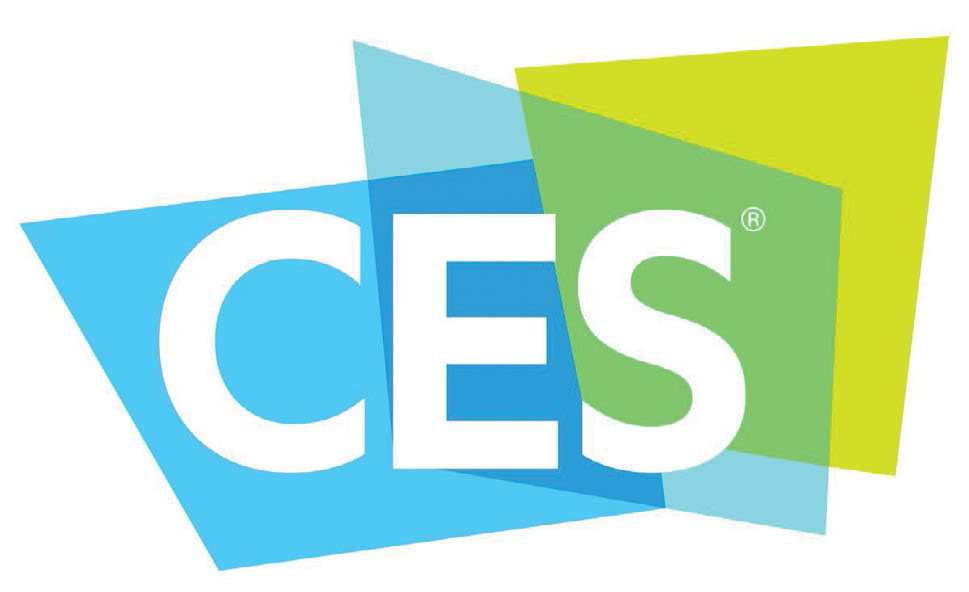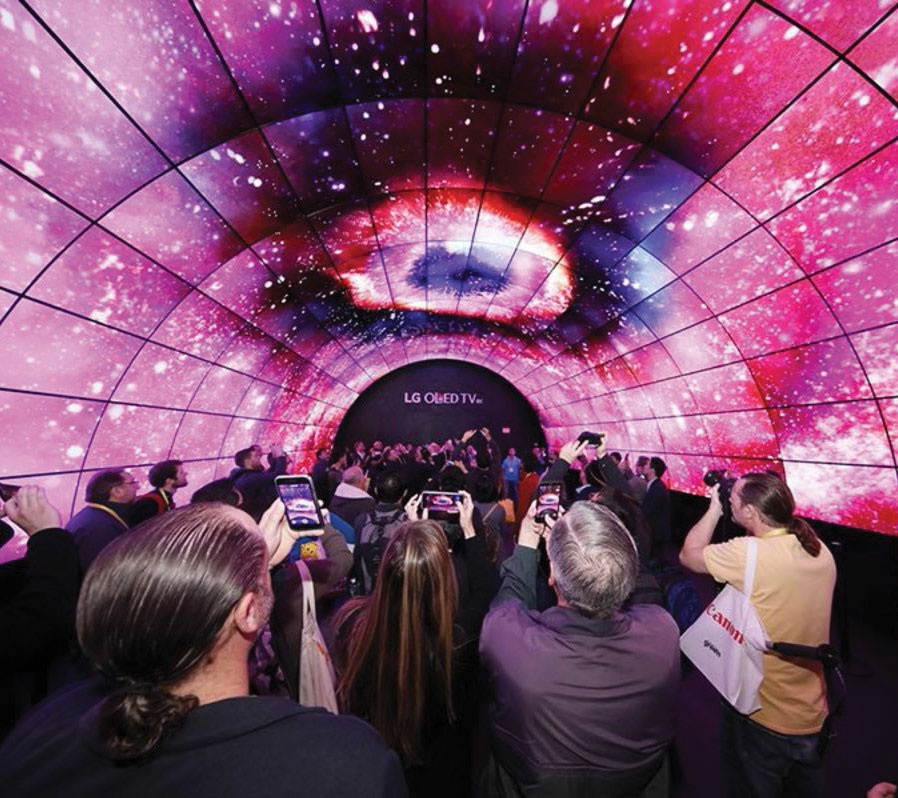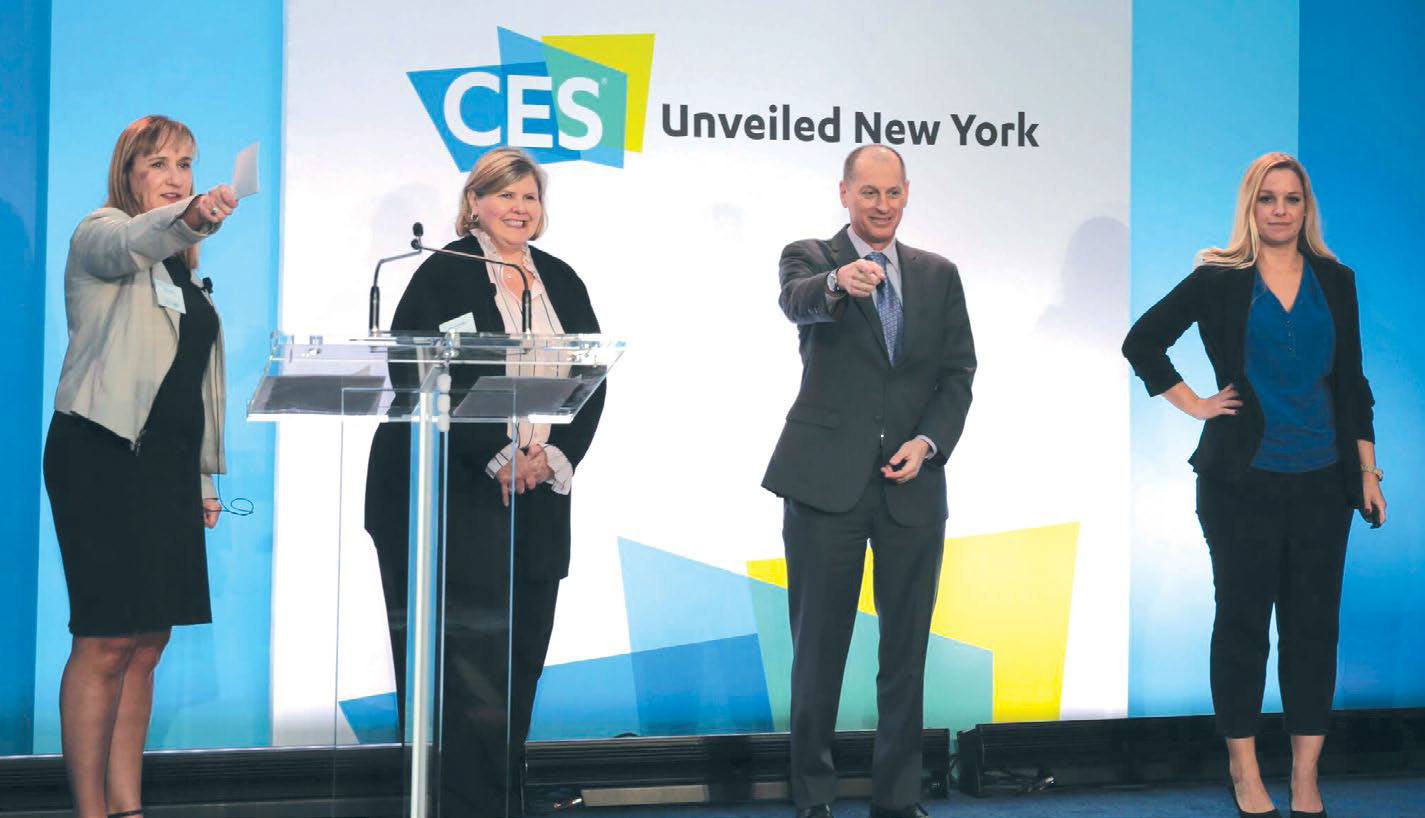TV at CES 2019: ‘8K Is Getting Real’
LAS VEGAS—Just before the 2019 CES begins Jan. 8, the Consumer Technology Association will reveal its annual electronics sales forecast, and for the first time 8K ultra high definition TV sets will be included in the forecast.

“8K is getting real,” says Steve Koenig, CTA’s vice president of market research. “We’ve seen 8K in previous years, but now I expect every manufacturer will show 8K equipment, and there will be big announcements about plans to begin shipping 8K sets later in the year.”
Koenig’s forecast will also confirm the strength of the television receiver market, showing that 55-inch 4K UHD displays are “now the industry standard,” a dramatic jump from the 42-inch screen which had been the mainstay of the flat-panel industry for several years. Koenig also expects that 65-inch sets will be heavily promoted at CES.
[Read: Is 8K Gaining Traction?]
Although Koenig admits he has “no idea” about the pricing for 8K equipment, he expects the sets will be just one aspect of the renewed focus on TV devices. Advanced TV display technology, including rollable screens, micro LEDs from Samsung and Sony’s short-throw laser projection are among products Koenig expects to see at next year’s CES.
THE RISE OF ‘C-SPACE’
CTA’s Karen Chupka, senior vice president, CES & Corporate Business Strategy, affirmed the staying power of television sets despite the boom in alternative viewing devices.
Get the TV Tech Newsletter
The professional video industry's #1 source for news, trends and product and tech information. Sign up below.

“At one point, everyone thought the TV set would become a dumb device, yet TVs have become smarter,” Chupka said. “TVs are still a huge part of our everyday lives. While we have all these great technologies being built into things we never thought of, at the end of the day, people are still using TVs, albeit interfacing with them in different ways.”
Citing the rapid adoption of streaming video, as well as user-created content, Chupka characterized as “incredibly important” the growing reality that “content resides on all our devices.” Focusing on the growth of “C Space,”—a conference and exhibit area at CES aimed at content producers, marketers and distributors—she focused on the growing role of analytics and other tools that help marketers and programmers evaluate new opportunities.
“We created C Space with the intent to bring branding, content and marketing people under one roof,” Chupka told TV Technology. “There is so much knowledge about who’s watching what and the ability to create diverse programming. All this data and analytics are becoming more and more important to understanding audiences.”
This year, “Sports Zone,” a popular component of the CES in recent years, has been moved to C Space, because it’s “such an important tie-in,” Chupka explained. The combination means that 2019’s C Space will be twice the size of last year’s event, which drew 22,000 attendees. Chupka expects a larger crowd this year.
Other technologies such as ATSC 3.0 will be less visible—but not absent—from the halls and suites at CES. Koenig does not expect manufacturers to demonstrate 3.0 devices on the show floor, although such products may be on display at the 2020 CES.
WELCOME TO ‘THE DATA AGE’
Along with 8K introductions, Koenig expects other video developments.
“What matters is picture quality,” he said. Technically advanced consumers will be looking for advanced features, such as high dynamic range. Koenig’s research also indicates that 4K sets will dominate U.S. TV sales in the coming year. Nearly half of all new receivers will have 4K displays in 2019, and that figure will rise to 55 percent by 2020, Koenig said.
Television sets are the number one most-owned technology in America, in 96 percent of U.S. homes, according to CTA’s research, with smartphones (86 percent) coming in second place.
“Even in this mobile-driven era, the TV remains the centerpiece of technology in U.S. homes,” Koenig added. “TV is still a major attraction at CES.” He expects that one major issue next month will be the intense global competitive market, especially as more TV brands from China offer innovations, just as Japanese and Korean companies have done in recent years.

At their presentation at the “CES Unveiled” preview in New York last month, Koenig’s CTA research colleagues predicted an upbeat holiday sales season, predicting that 164 million adults (about two-thirds of American adults) will purchase technology gifts, spending an average of $464. TV receivers remain the most popular item on the holiday wish list, similar to 2017, with notebook/laptop computers and smartphones/tablets filling the next two spots.
In their presentation, Ben Arnold, CTA’s senior director-innovation and trends, and Lesley Rohrbaugh, director-market research, introduced a new strategic perspective, calling 2020 the start of the “Data Age,” following the “Digital Age” (2000) and “Connected Age” (2010). They singled out the growing use of artificial intelligence—where IoT, which usually stands for “Internet of Things”—has been updated to the “new” IoT: “Intelligence of Things,” in which digital assistants become more specialized and a range of home products are integrated into a “whole home view.”
READY FOR ATSC 3.0
Pearl TV, the alliance of eight broadcast companies promoting Next Gen TV, will be active during CES in anticipation of its 2020 service launch, according to Anne Schelle, managing director.
“Our entire focus is on the commercialization of the very flexible ATSC 3.0 standard,” of Pearl TV, Schelle said. The organization’s leaders and its Phoenix model market partners will be at CES “meeting with various ecosystem partners, reaching out to consumer device manufacturers, automotive manufacturers, and other players to share our service requirements and plans resulting from the Phoenix tests,” she said.
Schelle contrasted the 3.0 rollout to the high-definition transmission and reception launch 20 years ago, which “took several CES and NAB Shows to accomplish.”
“It’s moving much faster in today’s digital environment,” she said. “While we don’t anticipate seeing much in the way of ATSC 3.0 receivers on the show floor itself in 2019, we know that ‘behind the scenes’ discussions will be about new partnerships and new capabilities of future television products—just like conversations in past years.
“CES will be another opportunity to explain how this transition is different than the last one, and how broadcasters are embracing the Internet Protocol capabilities of the new standard,” Schelle added.
Separately, ONE Media, the Sinclair Broadcasting technology unit that is developing Next Gen TV services, will privately demonstrate three configurations of its chip for ATSC 3.0 devices. There will be a simple demodulator package, a demodulator with analog/digital conversion capability and a demodulator with analog/digital conversion plus an embedded turner, according to Mark Aitken, president of ONE Media and Sinclair’s vice president of advanced technology.
First versions of the chip, which was developed by Saankhya Labs, an Indian firm in which Sinclair holds a major stake, were due to be delivered during the past month from a Samsung foundry. The single-chip receivers feature a low-power embedded antenna and were also designed for use in moving vehicles. The chips include a closely coupled antenna array to insure reception in a high-speed mobile environment, according to Aitken. “We’re going after the largest possible markets, including the global market for set top boxes,” Aitken told TV Technology. The new multistandard SDR (software defined radio) chip will support 23 broadcast standards, he added. ONE Media will demonstrate the technology privately in a hotel suite during CES and expects “we’ll have more to show” (possibly on the exhibit floor) at the 2019 NAB Show, Aitken said, adding that he also plans to demonstrate the chip’s capabilities at the Mobile World Congress in Barcelona in late February.
Aitken declined to discuss pricing, but said that even in low quantities, the price point will be “a fraction” of what other companies are charging for SDR chips.
SENSORY OVERLOAD
Beyond the renewed vigor within the video category, CES continues to expand its reach into countless digital realms—thereby attracting an ever more diverse array of exhibitors and attendees. For example, the Eureka Park exhibit area—where start-ups and young companies can display their innovations—will have 1,200 small booths next month, up from 1,000 in 2018 and six-fold the size of the first Eureka Park five years ago.
Overall, more than 4,500 exhibitors have signed up to show their wares in the 2.75 million square feet of space at CES’s three major venues in Las Vegas (Tech East, Tech West and Tech South, all of which include multiple buildings), CTA’s Chupka said. Floor space and the expected attendee roster of more than 180,000 people are “tracking ahead of last year,” Chupka added. About one-third of attendees are based outside the United States, and CTA’s tally shows that 65,000 people carry a “senior-level executive” title.
In addition to the Prince of the Netherlands and the United Kingdom’s Minister of Trade, 10 other overseas Ministers will take part in the programs.
Chupka is particularly enthusiastic about the growth of C Space, with its larger-than-ever presence by Hulu, NBCUniversal, Turner, Google and other old and new media companies. CES has expanded its “Marketplace” clusters of technologies—each focused on purveyors in categories such as robotics, artificial intelligence, virtual reality, smart cities and travel.
Koenig pointed out the continuing explosion of new programming, including material created for streaming, subscription video-on-demand and other platforms.
“There is so much content out there,” he said, speculating that the “mosaic of sources can be a ‘Frankenstein monster’ of content that consumers have trouble wrangling.” He said he’ll look for ways that artificial intelligence can better help consumers curate their choices. Koenig cited the predictive algorithms (recommendation engines) of Netflix and Amazon Prime which steer viewers to shows they like.
“As algorithms get better and better and train the AIs,” Koenig said he expects that the services will bridge to other digital assistants that will help consumers make viewing decisions. He cited a service, which will be on display at CES, in which LG uses Google Assistant to enable viewers to control the TV.
“It will be interesting to see what is the next level of integration beyond command and control, getting into curation,” Koenig said.
Among other features that he expects to emerge at CES is more audio for home theater, such as a new Dolby Atmos technology that provides “an enormously rich, immersive sound field to go with 4K or 8K.”
WHERE CONTENT AND TECHNOLOGY MEET

The CES conference program—spread over the four days of CES, Jan. 8–12—encompasses more than 250 sessions on dozens of topics. The keynote speaker line-up includes a first-time appearance by LG Electronics President/CTO Dr. I.P. Park, who will appear at a Monday night pre-show event to discuss how artificial intelligence has become the company’s main growth engine. Park is also expected to describe how AI will affect nearly every major industry from technology to healthcare, agriculture, transportation and engineering.
Other keynoters include IBM Chairman/President/CEO Ginni Rometty, who will also discuss AI and quantum in the context of trust and transparency, and Verizon CEO Hans Vestberg, who will (according to CTA) “take a deep dive into the impact of 5G,” especially for use in building smart cities infrastructure. AMD President/CEO Dr. Lisa Su will examine next-generation of computing, especially in terms of gaming and virtual entertainment.
FCC Chairman Ajit Pai is scheduled to sit down with CTA President/CEO Gary Shapiro for a half-hour on-stage chat about regulatory issues on the first day of CES. Other members of the FCC and Federal Trade Commission are expected to join various public policy sessions, which had not yet been confirmed at press time. International trade issues will also be on the agenda, Chupka promised.
Even after more than 20 years of overseeing CES, Chupka seemed awed at the velocity of changes now infusing the technology industry.
“One thing I think that will be surprising is how many advances there will be apparent in just one year.”
For more information, visitces.tech.
Gary Arlen, a contributor to Broadcasting & Cable, NextTV and TV Tech, is known for his visionary insights into the convergence of media + telecom + content + technology. His perspectives on public/tech policy, marketing and audience measurement have added to the value of his research and analyses of emerging interactive and broadband services. Gary was founder/editor/publisher of Interactivity Report, TeleServices Report and other influential newsletters; he was the long-time “curmudgeon” columnist for Multichannel News as well as a regular contributor to AdMap, Washington Technology and Telecommunications Reports; Gary writes regularly about trends and media/marketing for the Consumer Technology Association's i3 magazine plus several blogs.

